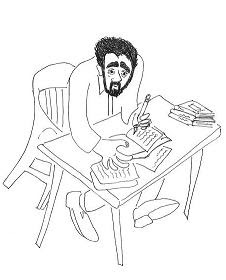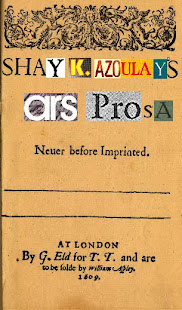- The movie is (kind of) based on a literary source.
- The movie really, really pissed me off.
Does anyone really remember the plot after Alice goes through the rabbit hole, or is it just a series of unrelated images – growing/shrinking, the mad tea party, talking to the caterpillar, “off with their heads,” et cetera? How many “fans” of the work actually remember the Duchess or Bill the lizard, who figure so prominently in the first book, and are missing from most adaptations? How many people realize that Humpty Dumpty, or Tweedledum and Tweedledee, are not denizens of Wonderland, but of the unrelated world through the mirror, or that the Walrus and the Carpenter, as well as the Jabberwock, are characters within poems included in the sequel (which incidentally constitute the best part of that book) that do not interact with the others?
But perhaps none of this matters, because the images are so powerful and memorable. Alice in Wonderland, as it has come to be known, has garnered a cult following, and it’s not difficult to understand why – it has all the elements required of a cult object, as described by Umberto Eco in his essay on Casablanca
What are the requirements for transforming a book or a movie into a cult object? The work must be loved, obviously, but this is not enough. It must provide a completely furnished world so that its fans can quote characters and episodes as if they were aspects of the fan’s private sectarian world, a world about which one can make up quizzes and play trivia games so that the adepts of the sect recognize through each other a shared experience. Naturally all these elements (characters and episodes) must have some archetypal appeal.I don’t think I need to expand on Alice’s archetypal appeal; if there’s one thing that the Alice books achieve best of all it is the creation of memorable characters – The White Rabbit, The Mad Hatter and the Queen of Hearts have all become cultural touchstones referenced by everything from superhero comics to psychedelic bands and I believe that few people now realize that Tweedledum and Tweedledee, the Cheshire Cat, and Humpty Dumpty were all characters, or at least concepts, that existed long before Carroll brought them into his work.
Another aspect of Alice that easily fits Eco’s definitions is the issue of nonlinearity, or un-narrative-ness brought up earlier, since a cult object “should display not one central idea but many. It should not reveal a coherent philosophy of composition. It must live on, and because of, its glorious ricketiness.”
So why does Tim Burton's adaptation fail so thoroughly, as both movie and cult object? I can think of two major reasons:
- It fails as a cult object because it puts too much emphasis on plot.
- It fails as a movie because it doesn’t have a plot.
It seemed as if the screenwriter, Linda Woolverton, perhaps knowing that she could not be as witty as Carroll, makes no attempts to be clever, and manages to make Carroll’s own witticisms seem trite (I guess she didn’t want to be outshined by her deceased collaborator). Whenever a reference to the original text was made, I did not smile knowingly, but rather winced, since it was so often thrown in out of context, without reason, and often thwarted by the actors’ garbled delivery.
For example, a throwaway line like the Mad Hatter’s riddle “Why is a raven like a writing desk?” is repeated as if it is some sort of zen-buddhist mantra of the “Tree-falling-in-the-forest” variety. Woolverton probably didn’t even think of looking at Martin Gardner’s annotated Alice, which offers a witty answer to the riddle: “Because Poe wrote on both.” Such a response should appeal to someone with Burton’s sensibilities, as would an overall darker tone and content, but these seem out of reach for this Disney-fied version by this Disney-fed writer (whose past writing credits include Beauty and the Beast
Though there’s no shortage of intriguing characters in the original texts, the cast seems oddly sparse and unvaried, and certain characters are transformed for no apparent reason. The somnolent dormouse, for example, is turned into a sort of feminist d’Artagnan wielding a pin, and an unjustifiably large (and schmaltzy) role is given to Bayard the bloodhound, which does not appear in the original texts. On the other hand, the Lion and the Unicorn, the White Knight, and Humpty Dumpty, figure nowhere in the movie. The same goes for the Gryphon and the Mock Turtle, my personal favorites, and the charming Lobster Quadrille they perform for Alice in the book is supplanted by the uninspired and excessively CGI-ed Futterwacken dance performed by The Mad Hatter.
Other characters are taken from the Jabberwocky poem and incorporated into the storyline, with the Jabberwock itself taking on a main role as the antagonist (It should be noted that the creature's name is Jabberwock, and the poem's name is Jabberwocky, but in the film the creature is constantly referred to as the Jabberwocky, which is somewhat akin to an adaptation The Great Gatsby
Incidentally, the whole idea of taking the poem literally and making characters based on the impossible creatures it describes is so lame it should have been done by the Muppets, not Tim Burton. Oh wait, it was done by the Muppets:
The gravest offense of all, however, isn’t that Burton drained the wonder out of wonderland and failed to replace it with anything else, but that he has utterly eliminated the madness of the original. The characters act, whether wisely or stupidly, in utterly coherent and logical ways, with clear purposes. The Mad Hatter isn’t mad at all, he’s just angry, and understandably so. Characters often talk about being mad or fearing that they’re going mad, but there’s regrettably little enough evidence of that.
The original works were a whimsical celebration of eccentricity and nonconformity, a sneer at Victorian mores, a gentle mockery of polite society, but this movie retains none of that, instead creating a simplistic good versus evil story, with a neatly packaged moral and a dénouement that should have any amateur screenwriter bashing their foreheads into the backrest in front of them, shouting, “show, don’t tell!” at the top of their voices.
There are many other faults in the film I cannot currently be bothered to go into, from the uneven cartoonish acting, through the pop-up book feel of the 3-D effects, and up to un-nuanced CGI-heavy design. As for the dull, unimaginative, and oppressively repetitive musical score by Danny Elfman, all I can say is this: I don’t know the first thing about writing a musical score for a film, but neither does Mr. Elfman.
There were so many ways this could have turned out to be a good movie, or at least an interesting one. I’m tempted to say Terry Gilliam should have directed it, but he has already tried to adapt Carroll’s material with fairly disastrous results (the 1977 movie Jabberwocky
Maybe it would have been best if Alice had received the Victor Fleming treatment some 70-odd years ago, as The Wizard of Oz
















![Darkness at Noon [Books That Have Changed Man's Thinking]](https://images.gr-assets.com/books/1327243764s/13349640.jpg)






